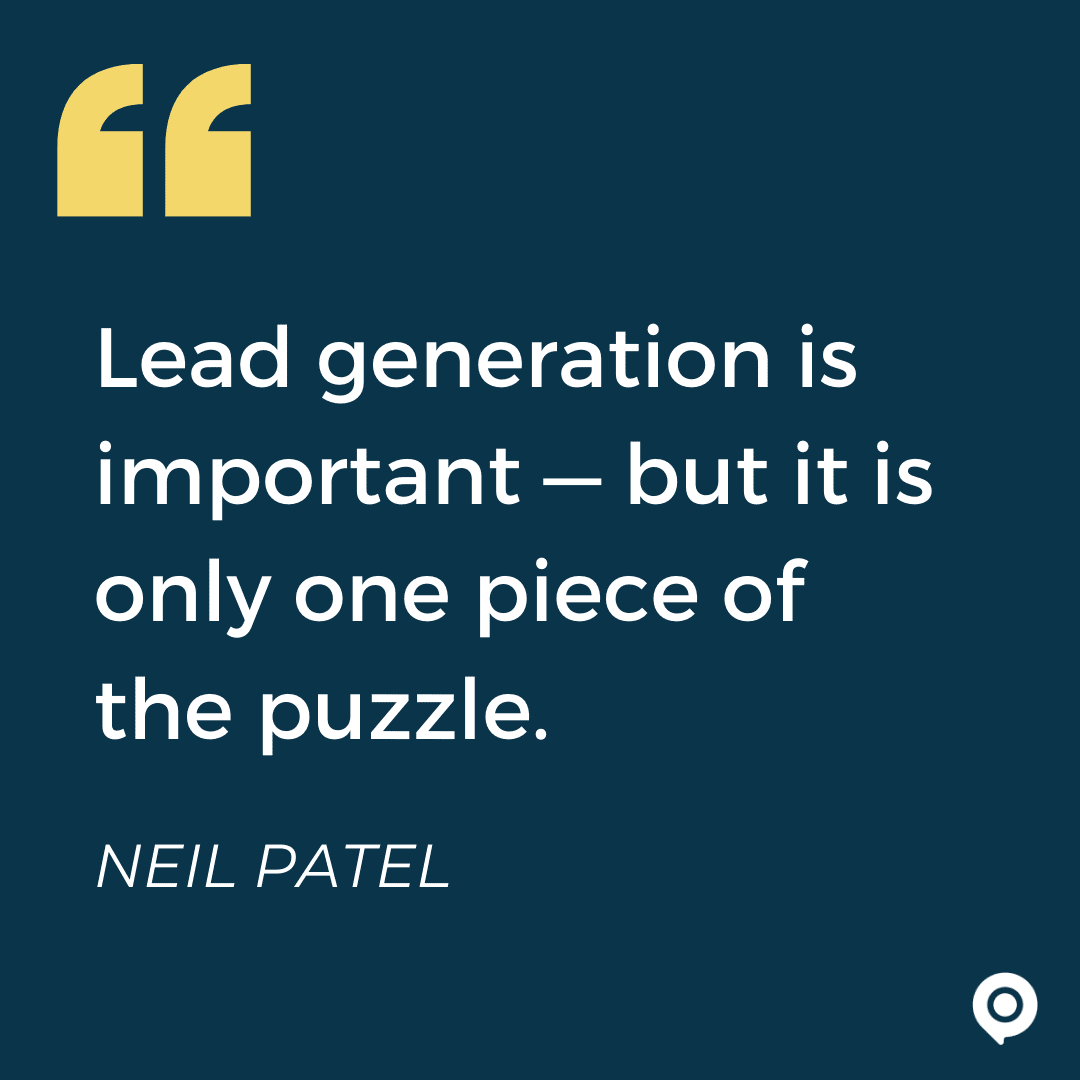A “key performance indicator” helps you understand the likelihood and trajectory of success. By choosing the right sales KPIs to track and set goals around, you develop data-backed processes for selling more effectively. In other words, what does it take to get a customer?
What are KPIs in sales?
In sales your KPIs specifically relate to tracking the progress toward a closed deal. At least it does when you choose meaningful KPIs that directly correlate with conversion and retention AND you have the tools, skills, and training to meet the related goals.
What may seem to be indicative of sales success at first glance isn’t always so. You need to break down the path to conversion and question what actually needs to happen to close.
Consider these 7 sales KPIs — and how they work together — as you evaluate sales success. And start learning why and how sales professionals use Skipio to meet those KPIs.
Monthly demo/meeting set rate
Appointment set rates represent one of the most basic but powerful sales KPIs.
The more people who agree to meet with you, the more meetings you end up having, and the more people who move through your sales pipeline. In theory that means you should be converting more customers.
Carefully tracking this KPI helps you understand the “formula” for hitting your quotas: X number of demos scheduled results in X number of closed deals.
Set more meetings
Way too many factors influence appointment setting — I’d never be able to cover them all in a single post. But one consistent factor is how you’re communicating with leads.
You set more appointments when you communicate in a convenient, authentic way. People want to know that there’s a human on the other end ready to help them. That’s what messaging with Skipio is all about.
By using Skipio to help with their demo scheduling, the JobNimbus sales team saw 12 percent more engagement over about six weeks.
With a combination of text messaging, Ringless Voicemail drops, and outbound calling, you can automate your outreach to engage more leads faster, resulting in more appointments set.
Monthly demo/meeting show rate
Just tracking the number of people who accept a meeting isn’t enough though. It’s great if you schedule 20 demos in a week! But those demos mean nothing if the people don’t show up.
Your meeting show rate helps tell the full story. Again, just like with tracking set rates, by using show rates as one of your sales KPIs, you can engineer the formula for how many people you need to actually show up to hit monthly quotas.
Increase show rates
Keep your leads accountable by sending reminders. Skipio makes it simple to schedule and automate the delivery of these messages.
Whether you want to send reminders as ringless voicemail drops or text messages, you don’t have to expend the time and mental energy to 1) remember each upcoming appointment and 2) send manual reminders.
Send multiple reminders to maximize on accountability. At the very least, automate sending a confirmation, a 24 hour reminder, and a 1 hour reminder.
The JobNimbus team sent personalized reminders with Skipio and got nearly 90 percent of appointments to show up for their scheduled demos.
Length of sales cycle
By tracking and establishing a baseline for the average time it takes a person to go from lead to customer, you can then look for ways to streamline your sales cycle.
Ideally a shorter sales cycle sounds better because it means you’re helping solve problems faster and sell to more people. But at times taking a little longer and fully ensuring someone fits with your solution will pay off bigger.
Your “ideal” sales cycle might also go longer if you’re selling to enterprise customers and/or the cost is higher. In that case it’s unsurprising that it may take weeks instead of days to get a signed contract.
This is why it’s so important to establish a foundational timeline specific to what you sell and who you sell it to. Your sales cycle length KPI will be unique to you.
Streamline your sales cycle
No matter your ideal conversion timeline, Skipio gives you the tools to improve your communication to move people through the sales pipeline.
For those looking to shorten a sales cycle, use Skipio to reach out faster and keep deals moving forward. That’s possible through automations like CRM integrations, drip messaging sequences, and reminder texts. You never forget to follow up and stop dropping leads accidentally.
If you know your sales cycle runs longer, use Skipio to stay in touch throughout the whole deal cycle. Build out follow-up sequences that keep you top of mind and always in communication, especially after meetings and calls with stakeholders.
Customer lifetime value (CLV)
How much money you stand to make over the time that a customer stays a customer is important for understanding how to sell more effectively.
The lifetime value of a customer may help justify a longer sales cycle and the amount of time and money your company invests in marketing and selling.
You need to know the baseline CLV associated with each of the different products and solutions that you sell. Your customer success and product marketing teams should be able to provide this information to you.
With this knowledge, you do a better job of identifying “ideal customers” in your pipeline. That makes the whole sale process easier.
Boost your CLV
Customer lifetime values go up when you give customers a better buying experience. Part of that is your communication. Skipio helps you have more touchpoints with leads at the most important times.
By developing your relationships and promoting ongoing conversations, you boost retention and CLV.
Skipio’s personalization features in particular help with increasing CLV because your sales process is more human. (People buy from people.) The most powerful and convenient option is populating text messages with info from your CRM so that you write a single follow-up message that’s personalized to multiple people.
Cross-selling opportunities and successes
Figuring out your baseline for cross-selling comes down to trial and error. You need to hypothesize when in the sales cycle it could be successful to cross-sell and then try it. Over and over again.
Through that trial and error, you pick up on the “tells” that indicate you have a better chance of getting customers to agree. By tracking opportunities for cross-selling (what you said, when you said it, who you said it to, how long the conversation took) and the outcome of those opportunities, you create a process anyone can follow to close more sales.
This KPI should also be broken down into cross-selling opportunities with leads and cross-selling opportunities with existing customers. Those conversations and timelines will be distinctly different.
Increase cross-selling opportunities
Cross-selling and upselling happen when you’ve got a clear understanding of your customers’ needs, goals, and preferences. When you consistently follow up and stay in touch, you keep a better pulse on each of those.
Skipio helps you establish a connection early on when you automate your outreach to start a conversation. As you continue following up, using tools like scheduled messages, 1-on-1 messaging, and Ringless Voicemail drops, you have the chance to talk about needs, goals, and preferences. That’s how you become aware of the solutions they’re using and what could help them even more.
Then, because you’ve developed a relationship and had conversations about those needs/goals in the past, customers are more receptive to what you have to say.
Average response time
When someone visits your website and fills out a form, sends a chat, or starts a trial, the amount of time it takes for you to start talking with them could very well be the difference in conversion.
How quickly you respond isn’t just about getting your pipeline filled. If you let people sit and wait at any point in the deal cycle, they’re going to find their solution somewhere else. Poor follow-up is how hot deals go cold from one meeting to the next.
Looking at how long prospects and customers take to reply to you is useful too. If people tend to reply quickly and positively, you’ve got a good idea that what you’re saying resonates.
Respond faster yourself and get faster replies
You respond fast with Skipio when you set up the right automations. Add the webchat widget to any page on your site and people can text you directly. Use that in addition to scheduling other outreach and people aren’t left waiting for long.
You’re also able to reply faster when in two-way conversations through Skipio’s browser and mobile apps.
But follow-up with Skipio is not just fast. It’s way convenient. Because it’s based in text messaging, you can fully prioritize response times — both your own and your leads’. People simply respond faster and more often through texting.
Contact to customer conversion rate
The ratio of leads and prospects to viable opportunities to closed customers isn’t just about the numbers. You have to look at what exactly gets a lead to become a customer.
What messages and cadence move things along? How many meetings or calls does it take to get to closed? What type of prospects actually buy and what solutions are most popular? Do certain solutions sell faster or for more money?
Increase customer conversions
Reaching out faster and with more personal communication contributes to higher conversion rates overall. That’s Skipio in a nutshell. The platform provides everything you need to get in touch, stay in touch, and actually talk with people. It’s not robotic or generic.
Fewer leads get dropped and customers stay around longer when you use automated and scheduled messages to help you build trust.
Also, your acquisition costs go down as you acquire more customers in less time, so it’s important to understand how to accomplish that.
Developing your sales KPIs
Sales KPIs that matter to you don’t necessarily matter to other sales people, and that’s okay. What matters is that you carefully track what does and does not work in your sales process and then use that data to scale future improvements.
Start making improvements now by adding Skipio to your communication toolset. Designed to help teams and businesses engage in two-way conversations with prospects and customers, you save time and resources while hitting sales goals.


